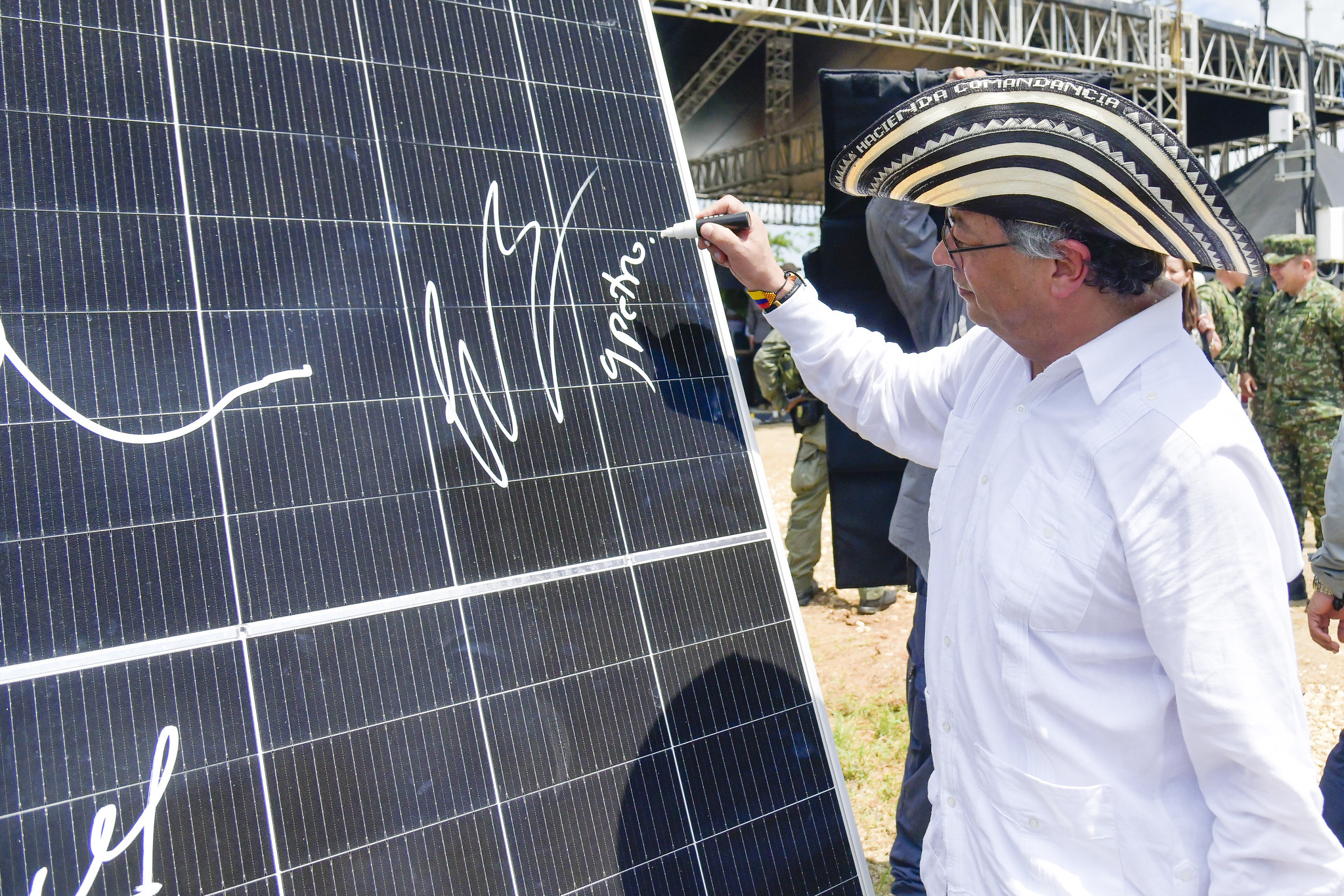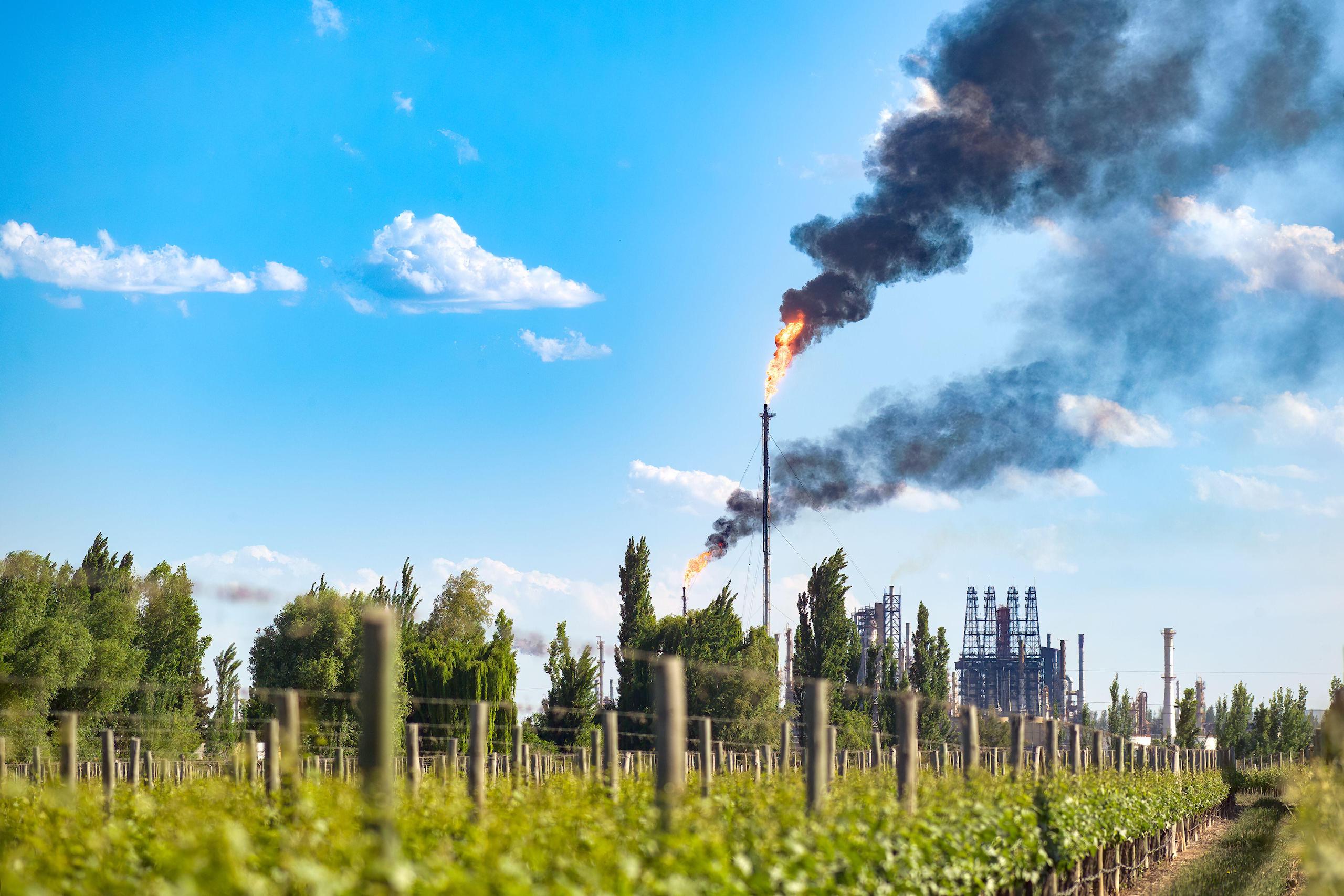Latin America is the only region other than China that is ahead of its 2030 target for increasing renewable energy capacity, according to the International Energy Agency (IEA).
In fact, the IEA believes the region’s untapped potential for hydropower, solar and wind energy means the collective ambition to triple global renewable capacity by 2030, agreed at last year’s COP28 climate summit, could be higher. This is something countries will have a chance to review in their updated plans for tackling climate change, which are due for submission to the United Nations early next year. But what do we already know?
On electricity, Latin America is and has long been one of the greenest regions in the world. Last year alone, 62% of the region’s electricity was generated from renewables, according to data from climate thinktank Ember. Hydropower alone accounts for 45% of electricity supply in the region, and has been the bedrock of electricity generation for decades in several countries.
There are also reportedly more than 8,000 renewable energy projects – including hydrogen – in their early stages across the region, requiring a total investment of USD 232.8 billion, and more than 700 projects, totalling USD 20.8 billion, under construction.
Fossil fuels do still make up two-thirds of the region’s energy mix – and dominate within transport and industry – but this remains some way below the global average of 80%.
Speaking to Dialogue Earth, Andrés Rebolledo, executive secretary of the Latin American Energy Organisation (Olade), said that there are around 500 gigawatts (GW) of installed renewable capacity across Latin America today, and he anticipates an additional 1,000 GW by 2050.
Rebolledo also pointed out that most of the “new energies” installed, and those planned, come from wind and solar power – not hydropower.
The success of the renewable energy sector represents a respite for the region in terms of its international commitments.
However, a sharper analysis shows two challenges. Sources consulted by Dialogue Earth argued, first, that there is a marked disparity between Latin American countries in terms of renewables development, and second, that increasing renewables does not yet necessarily translate into leaving fossil fuels behind.
Latin America, the world and China
Chile and Brazil are leading the way in Latin America’s efforts to boost renewable energy, ranking second and fourth globally in the recently released 2024 Renewable Energy Tracker from Climate Action Network. The tracker reviews the performance of 62 countries in seven categories, such as investment in renewables, jobs in the sector and planned additions. Other Latin American countries follow further behind in the ranking, such as Argentina (21st), Mexico (23rd) and Uruguay (27th).
These disparities mean the region collectively is taking slow but progressive steps towards some kind of transition. Rebolledo points out that their roadmaps are also subject to change, shaped by different political, economic and technological factors in both the international and national spheres.
Argentine sociologist and energy transition specialist Esteban Serrani said the fact the transition has become a “mainstream” development model is playing an important role. “Europe is also conditioning credits with a ‘green’ orientation. There is a business climate that, in general, is going green,” he adds.
According to Serrani, since the gas crisis resulting from the war in Ukraine, Europe has been seeking to accelerate the transition, “not exclusively for ecological awareness, but for autonomy and security”. This is why, he says, they include gas as a so-called “bridge fuel” in their concept of transition – a hotly contested definition.
But Europe is not the only power promoting these changes. China – home to the world’s largest renewable energy capacity, and the dominant force in solar and wind technology – aspires to be the great driver of the world’s energy transition.
In Latin America, China has established itself as a key supplier of manufactured technology, an importer and partner in the production of raw materials needed for the energy transition, and even a manager of electricity companies, as in the recent case of Enel in Peru, which was acquired by the country’s State Grid Corporation, and Pontoon in Brazil, which was bought by PowerChina.
Solar and wind power development
With the significant drop in prices of renewables, several Latin American countries have been able to accelerate their development of wind and solar energy.
Sources consulted by Dialogue Earth say they see the need to focus on how these external investments can benefit the region, allowing the countries to add value domestically instead of importing all the elements needed for renewable projects.
Serrani suggested that Latin American countries must address the energy “trilemma”. This is a concept that he and other experts in the region define as three variables that shape energy transition decisions: energy security, equity and sustainability. According to a recent report by the World Economic Forum that scores 120 countries using these metrics, Latin America’s score has grown less than any other region in the last decade.
In Mexico, Argentina, Bolivia and Venezuela, the energy transition has left much to be desired, says Manuel Pulgar-Vidal, the WWF’s global climate and energy chief and former Peruvian environment minister. This is because these countries remain heavily dependent on oil, gas and even coal for both consumption and export. Fossil fuels account for an average of 85% of the energy matrix in the four countries, analysis of IEA data by Dialogue Earth shows.
As a region that collectively creates 10% of global emissions, Pulgar-Vidal believes there is lower ambition in Latin America on the transition, making the process slower. “These governments also face systems of concessions and contracting under stability rules that limit them from taking on new challenges,” he added.
In the case of Mexico, Omar Masera Cerutti, a researcher in bioenergy resources and climate change at the National Autonomous University of Mexico, argued that the country went from being one of the most important oil exporters in the 1980s to importing about half of its refined fuels. The country reached its peak oil production in 2004 and gas production in 2009, after which production has steadily decreased, he noted.
Despite this, the previous government focused its energy policy almost exclusively on hydrocarbon production and stopped energy transition policies. “Especially when we suffer from 40% energy poverty, it is more difficult for oil-producing countries like this one to make a transition,” said Masera.
Despite these limits, Masera is confident that the new administration, headed by President Claudia Sheinbaum, will focus on the energy transition. “In the future, the focus will not be on hydrocarbon development, but first on energy efficiency and then on promoting renewables, especially in the electricity sector,” he added. Sources close to the new government told Dialogue Earth that 80% of the new projects proposed to the country’s Federal Electricity Commission (CFE) will be renewable.
Colombia, one of the countries with the greatest political ambition in terms of energy transition in the region, has also been unable to stop coal production, said Giovanni Pabón Restrepo, director of energy at the NGO Transforma Global. “It makes up 50% of exports and is a generator of foreign exchange,” he added.

Something similar is happening in Argentina, where different administrations have seen Vaca Muerta, a vast oil and gas field in northern Patagonia, as the answer to the country’s economic crisis and a way to reduce energy imports.
Pabón Restrepo notes that countries that have been more progressive with renewables have gone through an energy crisis at one point or another in their history. Such is the case of Brazil, Chile and Uruguay, which have brought in policies to diversify their electricity, including solar and wind energy.
Brazil’s electricity is mainly supplied by hydroelectric sources. But after a historic drought between 2000 and 2002, it developed a programme of incentives for alternative sources: biofuels from sugarcane and non-conventional renewables. It has also, along with Colombia, begun to pave the way for the development of offshore windmills.
In the World Economic Forum’s energy transition ranking, Brazil tops the list in the region and ranks 12th in the world. According to official data, the country’s electricity system is still dominated by hydroelectric sources, although there has been a growing presence of wind and solar energy since 2010. “It is now much more expensive to build new hydroelectric plants than to develop wind or solar farms,” said Ricardo Fujii, a specialist with WWF Brazil.
It wasn’t just market opportunities that influenced Brazil and other countries in the region to turn to renewables. Olade’s Andrés Rebolledo also credits the state’s vision for energy policies. In Chile, he was minister of energy in Michelle Bachelet’s government and was influential in the energy transition that has led the country to be among the most advanced in the region. “These policies have given continuity and coherence to this process, which has gone through different political cycles [containing] the most diverse positions,” he said.
In 2025, all countries in the region will have to submit their new climate plans, called Nationally Determined Contributions (NDCs), to the United Nations Framework Convention on Climate Change. While ambitions are expected to be higher, it is still uncertain what the scale will be. For Latin America, discussions remain focused not only on increasing renewables, but also on what role and responsibility their countries will assume on the global stage.










